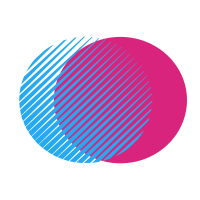Revolutionizing the Runway: Cutting-Edge Software Transforming Fashion Design and Trade
The world of fashion design and trade has always been an ever-evolving landscape. With technology, this industry has seen rapid transformation. It embraces innovative software and tools to redefine the creative process and expand business opportunities. In this blog post, we’ll explore some of the game-changing software solutions that are revolutionizing the runway and empowering fashion designers and traders alike.
1. Innovative Design Tools: Unleashing Creativity with Technology
A. 3D Design and Visualization
3D design software has become indispensable in the fashion industry. These tools provide designers with the ability to create realistic, three-dimensional garments that can be easily edited and manipulated. Some popular 3D design software includes:
- CLO3D: A powerful and user-friendly 3D design tool, allowing designers to visualize their creations in a realistic virtual environment;
- Browzwear: A comprehensive 3D design platform that facilitates the entire garment design and development process.
B. Digital Sketching and Pattern-Making
Those were the days of pencil and paper sketches. Modern digital sketching and pattern-making tools provide designers with unparalleled precision and ease of use. Some of the top digital sketching and pattern-making software are:
- Adobe Illustrator: A popular vector graphics editor widely used in the fashion industry for creating detailed design sketches and patterns;
- Gerber AccuMark: A powerful software suite for pattern design, grading, and marker making, catering to fashion designers and pattern-makers alike.
2. Streamlining the fashion supply chain
Fashion industry is notorious for its complex supply chain. By leveraging software solutions that streamline this process, fashion traders can optimize their operations, improve efficiency, and reduce costs. Some of the top supply chain software for fashion traders include:
- SAP Fashion Management: An end-to-end supply chain management solution, specifically designed to meet the unique challenges of the fashion industry;
- BlueCherry: A comprehensive enterprise resource planning (ERP) solution that provides a full suite of tools for managing the fashion supply chain.
3. Collaborative Platforms for Fashion Professionals
Collaboration is key in the fashion industry, and modern software solutions are making it easier than ever for designers and traders to work together seamlessly. Some popular collaborative platforms include:
- Techpacker: A user-friendly platform that streamlines the process of creating and sharing tech packs, fostering collaboration between designers, manufacturers, and traders;
- Polyvore: A community-driven platform that enables fashion designers and enthusiasts to create and share virtual mood boards, facilitating collaboration and inspiration.
4. E-commerce and Online Showrooms: Expanding Business Opportunities
The rise of e-commerce has opened up new channels for fashion designers and traders to showcase their products and reach a global audience. Innovative online showrooms and e-commerce platforms are transforming fashion buying and selling. Some of the top platforms in this space include:
- Shopify: A widely-used e-commerce platform that offers a range of tools and features to help fashion brands create stunning online stores;
- Joor: A leading online showroom platform that connects fashion designers and traders, making it easy to discover and purchase the latest trends.
5. Social Media and Influencer Marketing: The New Frontier of Fashion Promotion
Social media has become a vital tool for fashion designers and traders to promote their brands and engage with their audience. By leveraging influencer marketing and other social media strategies, fashion professionals can boost visibility and drive sales. Some of the essential social media platforms and tools for fashion promotion include:
- Instagram: A visually-driven platform that allows fashion designers and traders to showcase their collections, engage with customers, and collaborate with influencers;
- Pinterest: A popular platform for discovering and sharing fashion inspiration, making it an invaluable tool for designers and traders to promote their brands and reach new audiences;
- Hootsuite: A comprehensive social media management tool that enables fashion professionals to schedule posts, monitor engagement, and track their social media campaigns.
6. Analytics and AI: Harnessing Data for Smart Fashion Decisions
In today’s data-driven world, analytics and artificial intelligence (AI) play an increasingly significant role in shaping fashion’s future. By leveraging these cutting-edge technologies, designers and traders can make more informed decisions, optimize their strategies, and stay ahead of the competition. Some notable analytics and AI tools for the fashion industry include:
- Google Analytics: A powerful web analytics tool that allows fashion professionals to track website traffic, monitor user behavior, and gain valuable insights to inform their marketing strategies;
- Stylumia: A trend forecasting platform that uses AI and machine learning to analyze and predict fashion trends, helping designers and traders make data-backed decisions.
7. Sustainable Fashion: Embracing Eco-friendly Solutions
As the fashion industry faces growing pressure to become more sustainable, designers and traders are turning to software solutions that support eco-friendly practices. These tools can help professionals track and minimize their environmental impact, while promoting transparency and accountability. Some of the top sustainable fashion software includes:
- Higg Index: Developed by the Sustainable Apparel Coalition, this suite of tools allows fashion professionals to measure and score their environmental and social impact, driving improvements throughout the supply chain;
- Retraced: A supply chain transparency platform that enables fashion brands to showcase their sustainability efforts, build consumer trust, and promote responsible sourcing.
In conclusion, rapid advancements in technology have given rise to an array of software solutions that revolutionize the runway. These solutions are transforming fashion design and trade. From innovative design tools and streamlined supply chain management to e-commerce platforms and AI-driven analytics, these cutting-edge technologies empower fashion professionals to unleash their creativity, optimize their operations, and stay ahead of the competition in an ever-evolving industry. As the fashion world embraces technology, we can expect even more groundbreaking solutions to shape the future of fashion design and trade.
8. Virtual Reality and Augmented Reality: Pioneering Immersive Fashion Experiences
Virtual reality (VR) and augmented reality (AR) technologies are opening up new possibilities for fashion designers and traders to showcase their creations in unique and immersive ways. By leveraging these innovative technologies, fashion professionals can deliver unforgettable experiences, boost customer engagement, and drive sales. Some notable VR and AR tools for the fashion industry include:
- Obsess: A VR platform that allows fashion brands to create interactive, 3D virtual showrooms, enabling customers to explore collections in a fully immersive environment;
- Wannaby: An AR-powered mobile app that lets users virtually try on shoes, accessories, and clothing items, bridging the gap between online and offline shopping experiences.
9. Customization and Personalization: Tailoring Fashion to Individual Needs
As consumer demand for customization and personalization grows, fashion designers and traders are leveraging software solutions that enable them to tailor their offerings to individual needs. By embracing these technologies, fashion professionals can provide unique, personalized products that cater to a diverse range of tastes and preferences. Some of the top customization and personalization software for the fashion industry include:
- Unmade: A platform that enables fashion brands to offer customizable, made-to-order products, reducing waste and providing customers with a truly personalized shopping experience;
- True Fit: A data-driven personalization platform that uses AI and machine learning to recommend the right fit and style for each customer, enhancing satisfaction and reducing returns.
10. Education and Skill Development: Empowering the Next Generation of Fashion Professionals
As the fashion industry evolves, it’s essential for aspiring designers and traders to stay up-to-date with the latest tools, techniques, and trends. Software solutions help individuals develop their skills, gain valuable insights, and launch successful fashion careers. Some of the leading educational and skill development platforms for fashion professionals include:
- Udemy: An online learning platform that offers a wide range of courses in fashion design, marketing, and business, taught by industry experts;
- MasterClass: A premium online education platform that provides exclusive access to classes taught by world-renowned fashion designers, stylists, and photographers.
As fashion and technology merge, we can expect groundbreaking software solutions to emerge. This will transform the landscape of fashion design and trade. By staying informed about these cutting-edge tools and embracing the opportunities they present, fashion professionals can adapt to changing industry dynamics, enhance their creativity, and build thriving businesses in the digital age.
11. Smart Textiles and Wearable Technology: The Future of Functional Fashion
Smart textiles and wearable technology are redefining the boundaries between fashion and functionality. As designers and traders embrace these cutting-edge innovations, they can create garments and accessories that not only look good but also serve practical purposes, such as monitoring health, enhancing athletic performance, or improving personal safety. Some notable advancements in smart textiles and wearable technology include:
- Google Jacquard: A platform that integrates touch-sensitive fibers into fabrics, enabling designers to create interactive, connected garments that can be controlled through simple gestures;
- Ouraring: A stylish and discreet smart ring that tracks various health metrics, including sleep patterns, heart rate, and physical activity, helping users optimize their well-being.
12. Blockchain and Cryptocurrency: Reinventing the Business of Fashion
Blockchain and cryptocurrency technologies are poised to disrupt the fashion industry, offering new ways to manage supply chains, authenticate products, and facilitate transactions. By leveraging these innovations, fashion designers and traders can enhance transparency, reduce fraud, and streamline their operations. Some prominent blockchain and cryptocurrency solutions for the fashion industry include:
- VeChain: A blockchain platform that provides end-to-end supply chain tracking, enabling fashion brands to verify the authenticity of their products and improve consumer trust;
- Lukso: A blockchain network specifically designed for the fashion and lifestyle industries, offering a decentralized platform for tokenizing assets, creating digital identities, and facilitating secure transactions.
13. 3D Printing and Additive Manufacturing: Redefining the Art of Fashion Production
3D printing and additive manufacturing technologies are revolutionizing the way fashion items are produced, offering new possibilities for customization, sustainability, and creativity. By adopting these advanced production methods, designers and traders can create unique, intricate designs, minimize waste, and reduce the environmental impact of their operations. Some noteworthy 3D printing and additive manufacturing innovations in fashion include:
- Electroloom: A 3D printer that uses an electrospinning process to create seamless, customized garments directly from digital designs, eliminating the need for traditional sewing and assembly;
- Adidas Futurecraft: A line of 3D-printed shoes that are made to order, providing customers with a personalized fit and reducing the waste associated with mass production.
As we look to the future, it’s clear that technology will continue to play a pivotal role in shaping the world of fashion design and trade. By staying informed about the latest software solutions and emerging trends, fashion professionals can harness the power of innovation to create exceptional products, drive business growth, and redefine the runway for generations to come.

